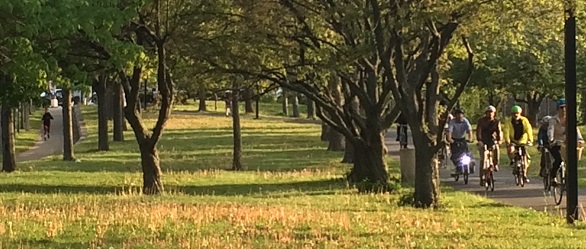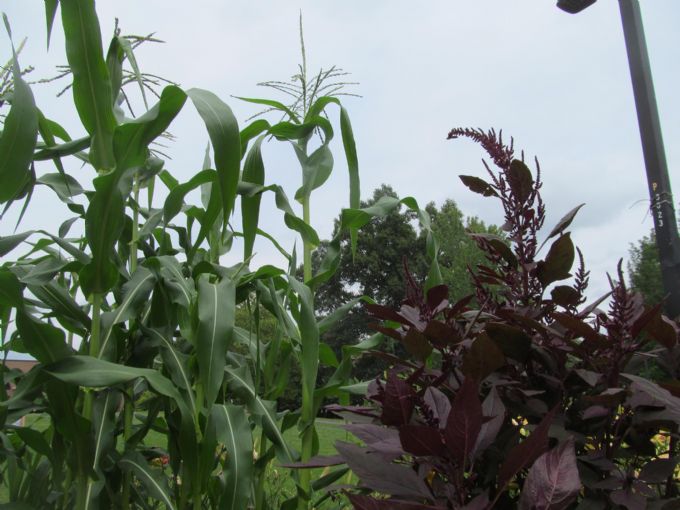Southwest Corridor Park
About The Southwest Corridor Park
The Southwest Corridor Park is a 4-mile linear park that runs along the path of the MBTA Orange Line with bicycle and walking paths, playgrounds, spray pools, basketball courts, tennis courts and gardens. On the Southwest Corridor Park you can travel from Forest Hills MBTA station to Back Bay MBTA station, and along the way you will see neighbors gardening; people walking their dogs; people bicycling; skateboarders skateboarding; children playing; and MBTA Orange Line trains passing by.
The Southwest Corridor Park is a state park, under the care of the Massachusetts Department of Conservation and Recreation (DCR), with extensive community involvement through our network of park volunteers and partner/neighbor organizations. (See ABOUT THE CONSERVANCY and ABOUT PMAC and the FRIENDS OF CARLETON COURT DOG PARK on this site.)
The history of the Southwest Corridor is highly regarded as a model of community voice and engagement. From the People Before Highways movement to the landmark changes in federal highway policy that allowed highway money to be used for alternative, green transportation to the park planning and design process; to the volunteer tradition that continues today -- the story of the Southwest Corridor Park stands as a model of the importance of urban parks in creating a healthy and resilient city.
The design of the Southwest Corridor Park was the work of literally thousands of meetings, with input from neighborhood residents from each neighborhood along the park. During the planning and design process, the design team organized seven Station Area Task Force (SATF) groups, with one for each of the neighborhoods near each MBTA transit station that would be along the new path of the Orange Line. The Parkland Management Advisory Council (PMAC) was also part of this process, serving as the park-wide advisory council for the process, and continuing in this park-wide role today. Because of those meetings, the park has different features in each neighborhood. The people in some neighborhoods were especially eager for gardens; some wanted playgrounds; some wanted places for baseball, basketball and tennis. That is why there is a wide mix of park features across all sections of the park, with bicycle and walking paths and common landscaping and design elements tying the whole park together as a whole. The park has won many awards for its thoughtful design and for the strong role of neighborhood groups in designing the project.
 The tradition of neighborhood involvement continues. Many of the park activities and park improvements are led by volunteers who
bring together volunteers and community donations to work in the parks.
The tradition of neighborhood involvement continues. Many of the park activities and park improvements are led by volunteers who
bring together volunteers and community donations to work in the parks.
Visit the Southwest Corridor Park on a Saturday morning, and you may see groups of neighbors planting flowers and pushing wheelbarrows filled with compost and mulch. Behind the scenes, volunteers meet in community meetings to study the needs of the parks and work with the city and state agencies. Each year, thousands of hours of volunteer energy are contributed to the parks. Volunteers choose this work because it is a way to enjoy time in nature and because it is a way to help bring neighbors together to build a stronger and healthier city.




 The Southwest Corridor is a state park managed by the Massachusetts Department of Conservation and Recreation
The Southwest Corridor is a state park managed by the Massachusetts Department of Conservation and Recreation